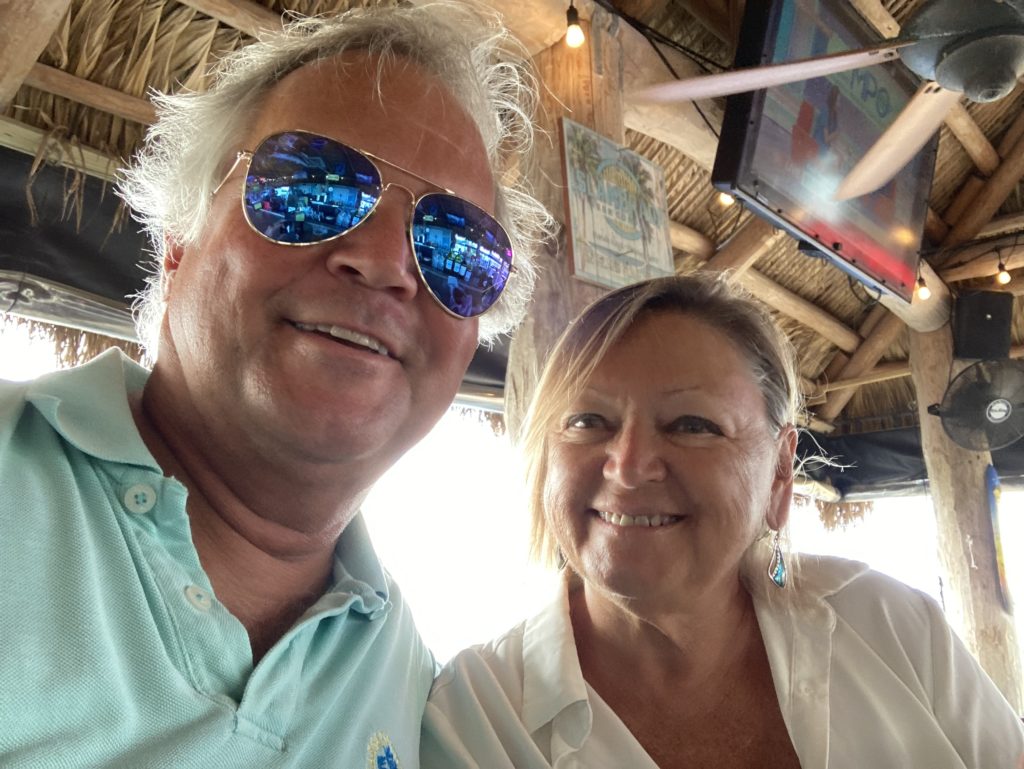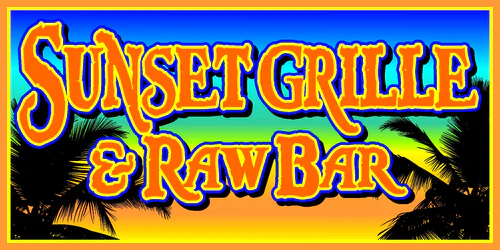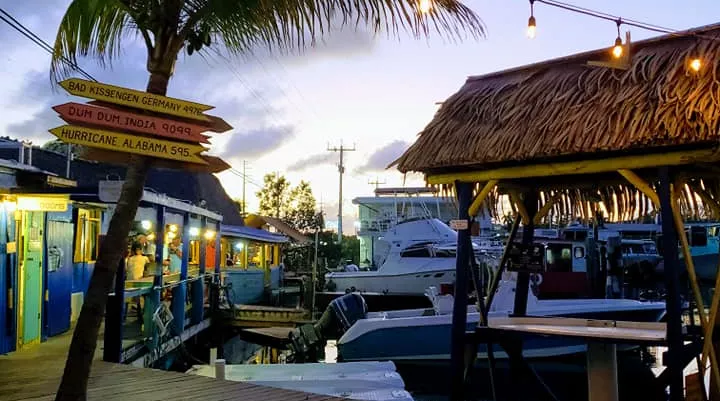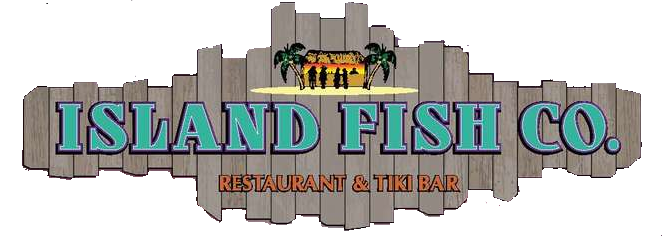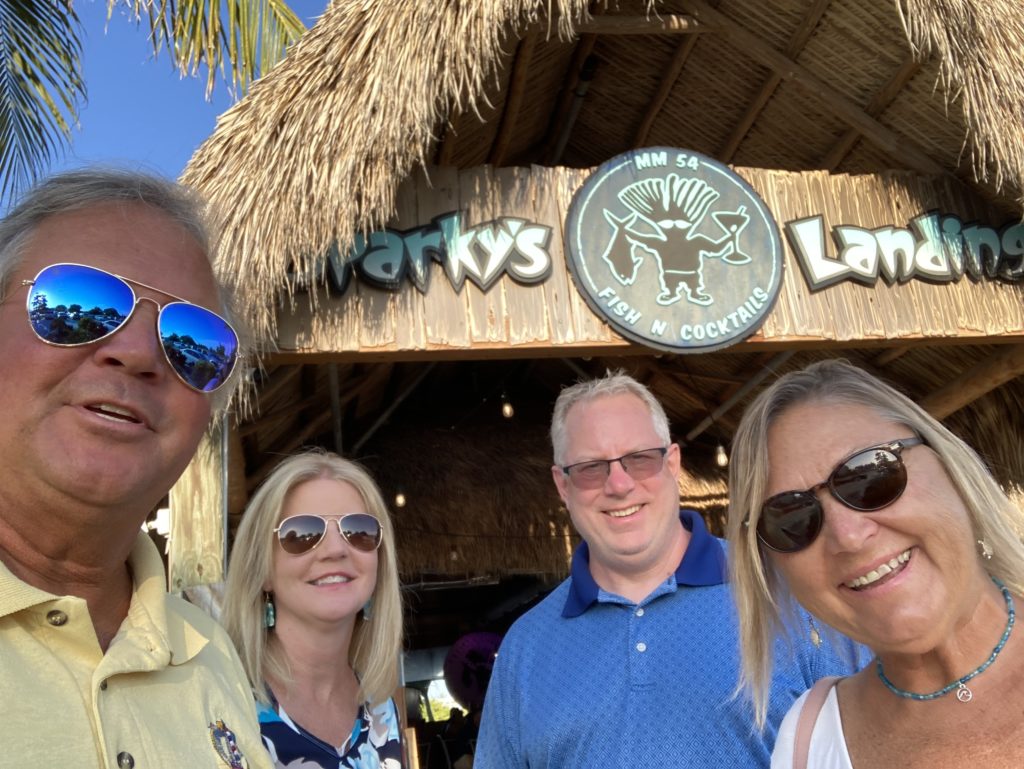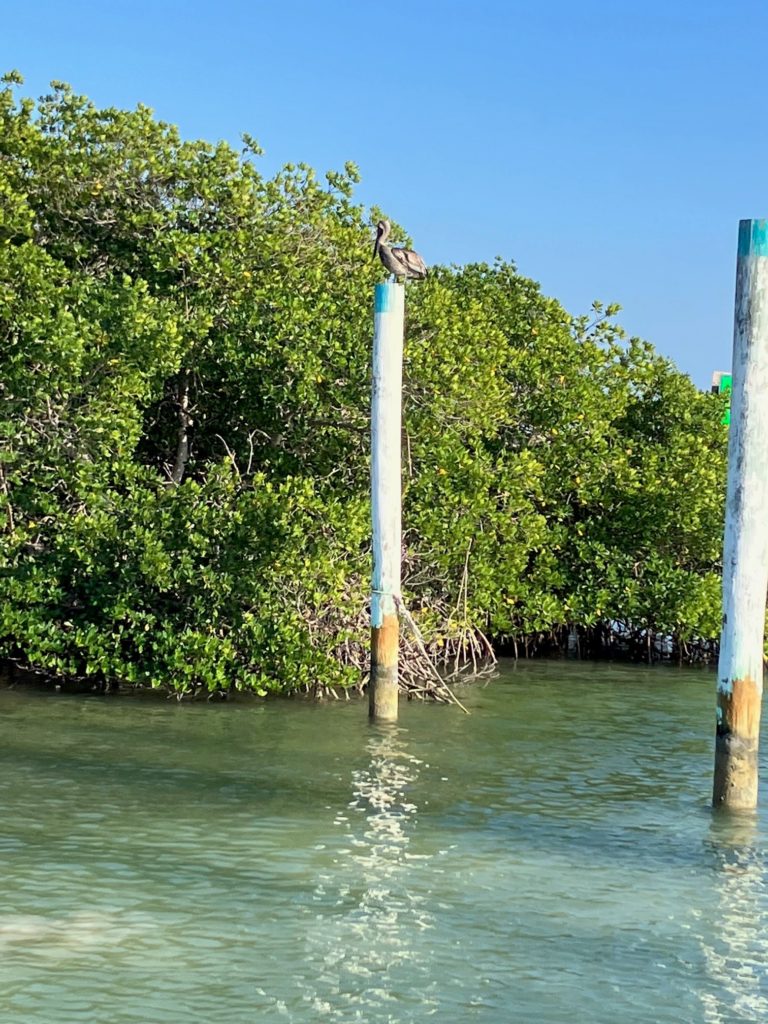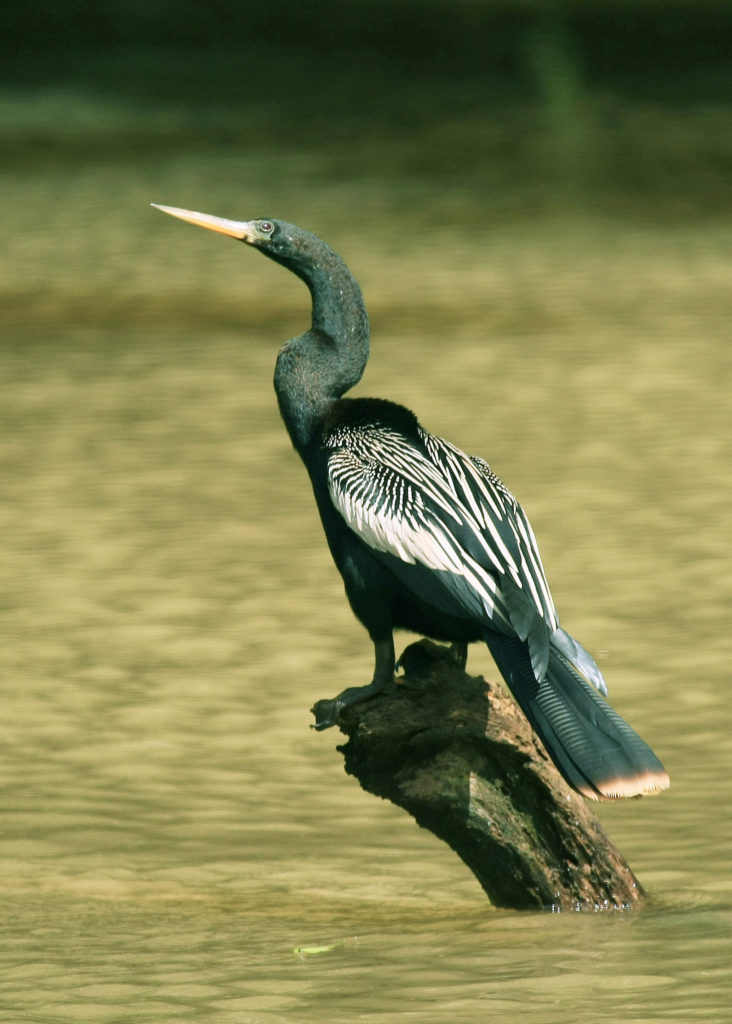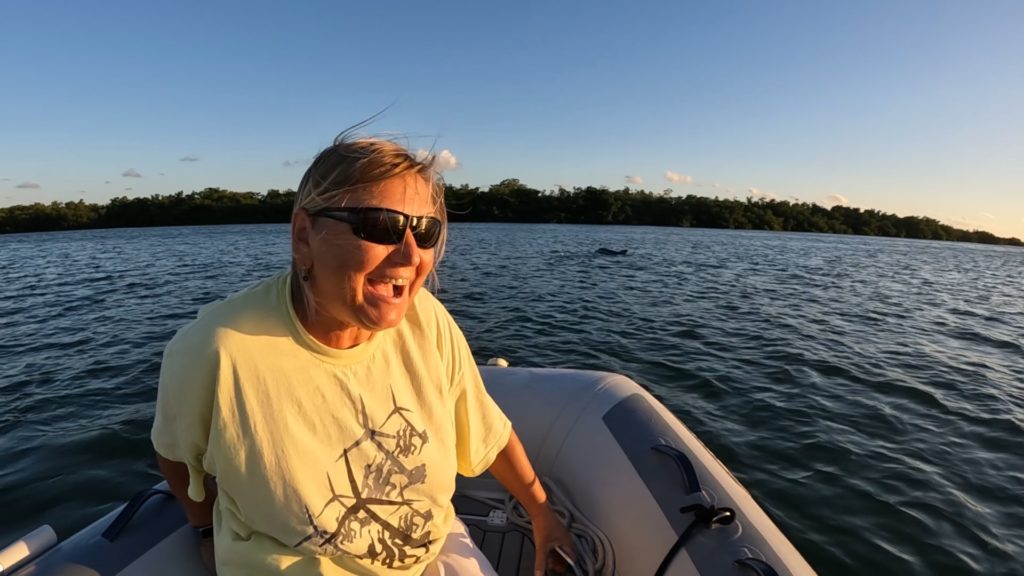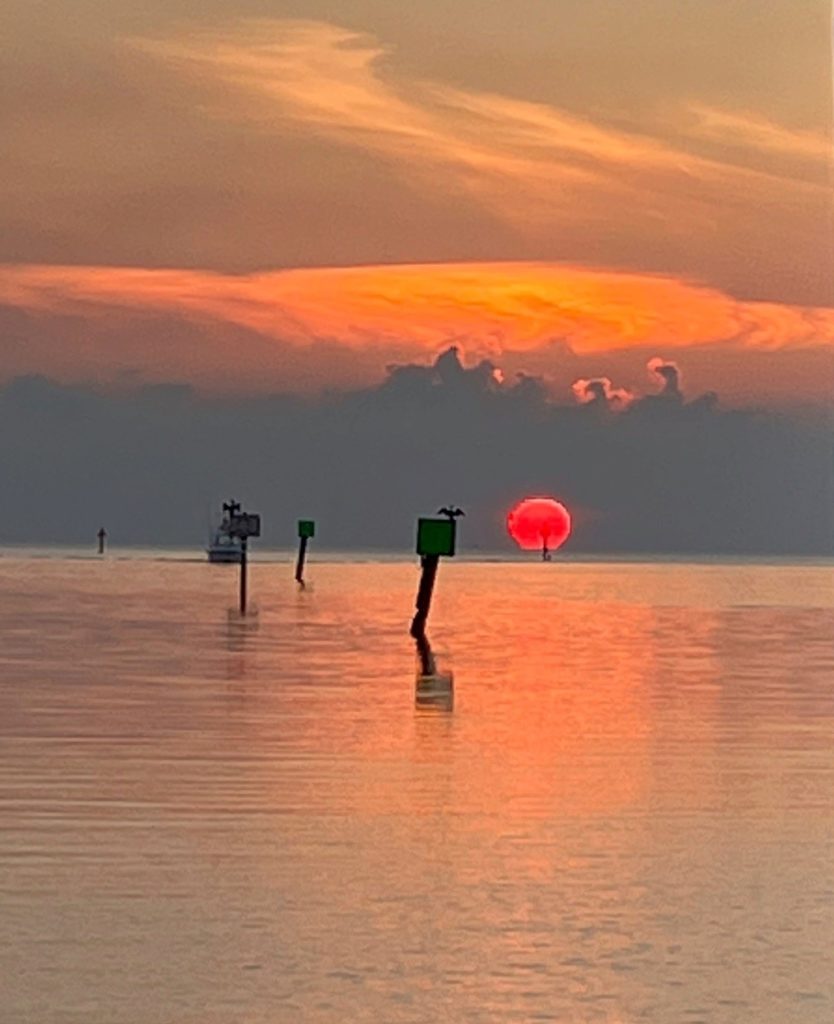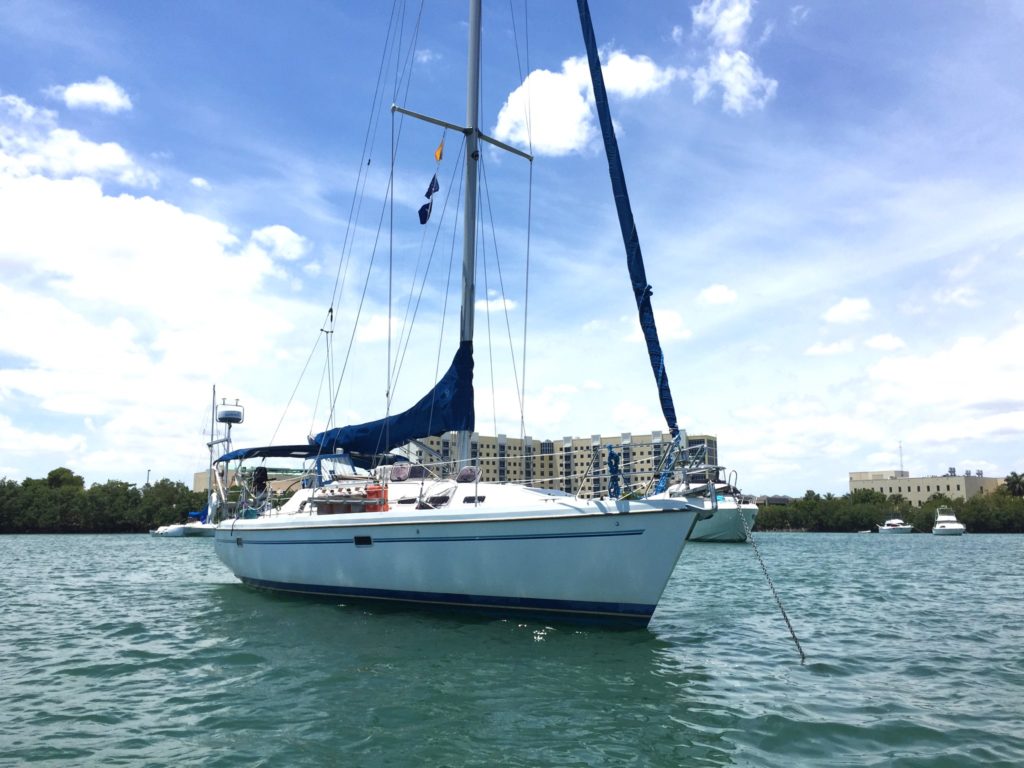Twenty years from now you will be more disappointed by the things
that you didn’t do than by the ones you did do.
So throw off the bowlines. Sail away from the safe harbor.
Catch the trade winds in your sails. Explore. Dream. Discover.
— Mark Twain
We pulled up the anchor in Royal Island Harbour and motored the last five miles east to Russell Island, which is considered to be a part of the Settlement of Spanish Wells. Of the three Explorer Chartbooks that cover the 700 islands of the Bahamas, Spanish Wells is covered by the “Far Bahamas” chartbook. We were now in the “Far Bahamas.”
The anchorage near the inlet to Spanish Wells was a little crowded, so we dropped the hook behind the other anchored boats about a quarter mile from shore, maybe a mile from the town.

After a few hours of rest, we lowered the dinghy and took ourselves to a beachside cafe called the Sandbar. We pulled the dinghy onto the beach and anchored it in case of a rising tide. Then we climbed up to the restaurant and took a seat at the bar where we could watch the dinghy being pushed around by the surf.

For the next few weeks, we made our own water, gathered electric power from the sun and listened to the quiet hum of the power station near our anchorage. We did our laundry by hand, ran the generator on cloudy days and explored the quaint town of Spanish Wells. It was the destination we had dreamed of, and we had made it.

Seven Things We Did in Spanish Wells
1. Move to an uninhabited island to hide from wild winds
Two days later, we were looking at wind predictions on Predict Wind and questioning our position. The prevailing wind direction is easterly, and we were nearly unprotected from that direction. The high winds were expected to last for four days, with the worst coming on Saturday. It was the Thursday before Easter; time to move, already.

Phil studied the charts and found a good anchorage with eastern protection just two miles away. The island was called Meeks Patch, and we could see from the cockpit that other ships were headed in that direction. It’s a deserted island except for a colony of pigs and a lone entrepreneur who charges visitors $10 to meet them. He didn’t live there; just brought tourists.
We pulled up the anchor around noon and dropped it next to the deserted island at 1:15. There were a dozen boats here, hiding from the wind, but there was plenty of room. We had a sheltered spot as the winds started to swell and roar through the next few days. We held tight to our Delta anchor and did not drag an inch. During the lulls, we got in the dinghy and explored. We didn’t get back to Spanish Wells until after Easter. Everything was closed on Good Friday, Sunday and Monday. (Easter Monday? Who knew!)
2. Visit the swimming pigs
As the winds subsided, we dinghied to shore after hours when no humans were there to take our money. We saw six or seven large sleepy pigs lying around in the sand, and lots of cute little piglets.

“Look,” Phil said. “It’s an actual pig pile!” Little ones were sleeping all over each other, like puppies. We also saw ducks and chickens.
“There’s a whole barbecue here for meat lovers,” I joked. We are vegetarians, so no temptation for us.
3. Walk on a deserted beach
We explored Meeks Patch on Easter Sunday, taking the dinghy to several beaches where we were utterly alone. The water was shallow and clear, and very warm. We dragged the dinghy onto sand with not a single footprint and felt like explorers. It’s not that unusual to find deserted beaches here, and we enjoyed leaving a trail of prints in virgin sand.

4. Ride the tide into a perfect beach
After the winds calmed down, we headed back to our Russell Island anchorage, picking the same spot we had left just four days earlier. It was about a mile to the main channel into town, and a mile to the Sandbar, where we often went for happy hour. It was time to explore Spanish Wells, just a short dinghy ride to the east.
One of our first discoveries was an incredibly beautiful beach where the tide changes rushed in and out, turning dry sand into shallow pools of clear water. The incoming tide is so strong, people make human rafts and lift their feet up, letting the current wash them into the channel.
We visited this beach twice, and Phil snorkeled through the incoming tidal current. I packed a picnic and we made a day of it. This beach is adjacent to a park and features a beach swing, which is pretty hard to get into at low tide. I tried.
5. Visit every single restaurant
As far as we could tell, there are just four (or maybe five) restaurants in Spanish Wells, and we hit them all. The fifth is the Eagle’s Landing, which we thought was a private club, so we didn’t try it. We visited the Sandbar by dinghy, Wrecker’s at the Spanish Wells Yacht Haven, the Shipyard at the eastern end of the town, and Budda’s Snack Shack in the middle of the island. Near Budda’s is Papa Scoops, a local ice cream shop serving homemade flavors like Cheesecake and Oreo Cookie, but it’s only open two hours in the evening and only makes two flavors a day.
All of the restaurants are accessible by dinghy, but the Shipyard dock is in very shallow water so we could only get the dinghy in at high tide. The only dolphins we saw in the Bahamas in the three months we were there were in the main harbor on our way to Wrecker’s. They were small and brownish colored and swam right in front of our dinghy.



6. Rent a golf cart and explore

Spanish Wells is walkable if you don’t mind a mile or two. From the harbor, where we entered the town on our dinghy, you can reach a grocery store, snack shop, two marine stores, two restaurants and a liquor store all within a mile. On the other, farther side of the island are the larger grocery store, the post office, gift shops and a hardware store. We wanted to explore the whole place so we rented a golf cart. There are more golf carts in Spanish Wells than cars. Note: they drive on the left, so we had to be very careful, especially when turning right.

The plan was to drive the full perimeter road and discover what we might have missed in our dinghy runs into town. Along the way, we found a gift shop with picture post cards and sent some to family — once we found the tiny post office. The one large grocery store is a pretty long walk from the dinghy docks, so we visited by golf cart.
We crossed the cute bridge by our favorite beach and discovered another beautiful beach around the corner. We followed some winding roads up into the bluff above our anchorage and took a picture of our boat at anchor (the picture is the first one in this blog, above). There are some incredible homes with amazing ocean views up there on the hillside. After getting a little bit lost, we found our way back to town and stopped for lunch at Budda’s.

7. Meet the people
The first people to arrive from Europe were a group of Puritans escaping England to practice their religion freely. After a stop in Bermuda, they sailed on to Eleuthera and wrecked their ship on the Devil’s Backbone, surviving by sheltering in a cave. The year was 1647. The Eleutheran adventurers as they are called, ate fish and found fresh water in the wells dug by Spanish treasure hunters, giving the town its name. The Spaniards had used the island as a last water stop before crossing the Atlantic.
Because it was so remote from other inhabitants of the Bahamas, the people who settled here developed their own native accent, which you can still hear when the locals talk. It’s hard to describe, but it sounds a bit like an Irish lilt. Today, fewer than 2,000 reside here full time, and it is the only majority white district in the Bahamas.
The people here say hello when you pass on the street. The bartenders and servers are friendly and proud of their community. The cashier at Pinder’s Market spoke with the native accent and told us she was born and raised on the island. We recognized the accent in the speech of servers at Budda’s and the bartender at the Shipyard. A stranger on the beach told us about her life on the island, all in the British/Irish lilt of Spanish Wells. It’s a small, close-knit group of families who are proud to belong here.

It’s Time to Go Home
Phil threatens to turn himself in at the Bahamas Immigration office and slap his U.S. passport on the desk, screaming “I defect!”1 but I’m not sure that’s the way to extend our stay. We had 90 days to be in the Bahamas, and our time is nearly up. Besides the permissions expiring, there is also the problem of getting my medications for Type 1 diabetes and cancer, and a round of medical scans scheduled for the first weeks of June back in Florida. We could have had a one year permit for twice the money, but I would still have to go back for medical reasons.
We are slow cruisers, and maybe we didn’t see every tourist spot in the surrounding islands. But we got to know this place, and its people. We lived off the grid for over a month, relaxing on the boat most afternoons, or riding in for happy hour. It was a month; but we could have stayed longer. Maybe the next time we’re here, Phil really will defect and we’ll settle down in one of those little cottages with the wide open porches. If we ever go missing, look for us here first.

- Very arcane reference to Robin Williams in “Moscow on the Hudson.” https://en.wikipedia.org/wiki/Moscow_on_the_Hudson ↩︎






















